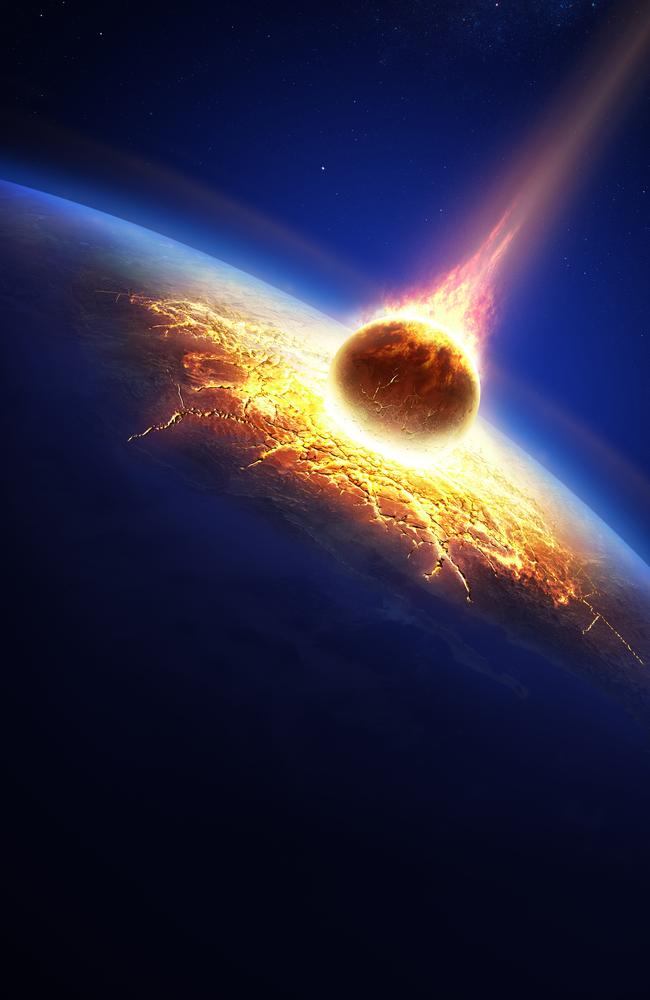NASA and US Nuclear Security Administration working on possibility of nuking dangerous asteroids and comets
NASA is working with the US Nuclear Security Administration at the possibility of using nuclear bombs to destroy asteroids heading for Earth.

NASA is working with the US Nuclear Security Administration at the possibility of using nuclear bombs to destroy hazardous asteroids and comets heading towards Earth.
In a new partnership to defend Earth and its populations, the two bodies are looking at how to deflect and/or stop around one million near-Earth asteroids that could threaten cities and, in the case of a very large asteroid, the planet, New York Times reported.
Only a tiny fraction of those asteroids have been detected and can be tracked.
As in the 1998 film Armageddon — where Bruce Willis flies a space shuttle to an oncoming asteroid to drill a warhead into its core — the nuclear payload could be delivered by rocket.
“Often, these agencies focus on their own pieces of the puzzle, so anything that brings them together is a good thing,’ Bruce Betts, director of science and technology at the Planetary Society told the Times.
On February 15, 2013, a meteor weighing 12,000-13,000 metric tonnes and about 20 metres in diameter exploded above the Russian city of Chelyabinsk, injuring 1500 people. The dazzling light from the meteoroid — which is smaller than an asteroid — blinded eyes and burned skin even though the temperature in the city was below freezing.

It gave the threat from an asteroid new credibility and NASA chief Charles Bolden told the US Congress in March 2013 that if a large asteroid was heading for New York City then his advice would be to pray.
The two agencies have studied the threat of asteroids on their own and are now looking to combine their expertise in designing rocket interceptors and have run supercomputer simulations to see if a nuclear blast could nudge a large asteroid off course.
“It’s a big step forward,” said Kevin Greenaugh, a senior official at the nuclear security agency. “Whenever you have multiple agencies coming together for the common defense (sic), that’s news.”

Using an atomic bomb to blow up asteroids may work particularly well on medium-sized asteroids and comets between 50 and 150 metres in diameter.
An Iowa team of scientists outlined a similar vision at a NASA conference last year, stating that they would need just a week’s notice to launch if the system were developed.
Called the Hypervelocity Asteroid Intercept Vehicle, or HAIV, the craft would rendezvous with an asteroid in deep space. It consists of a leader spacecraft, which would hit the comet and create blast crater. Around a millisecond later, a follower spacecraft carrying nuclear explosives would hit inside the crater — which increases its effectiveness by up to 20 times.
However, some scientists claim that the resulting rock fragments could make the situation worse, and that deflecting an asteroid may prove to be a better solution.
The atomic bomb method would become suitable only if a large threat happened too quickly for countermeasures that were less powerful, advocate those scientists.
“I’d like to see it as a last-ditch option,” said H Jay Melosh, a geophysicist at Purdue University in Indiana, who served on a national panel in 2010 that evaluated extraterrestrial threats.
This year, NASA unveiled a website that lets visitors explore the cratered surface of Vesta, one of the solar system’s largest asteroids at more than 482km across. The agency also released a computer app that — at least in theory — lets amateur astronomers help the agency find new asteroids.



